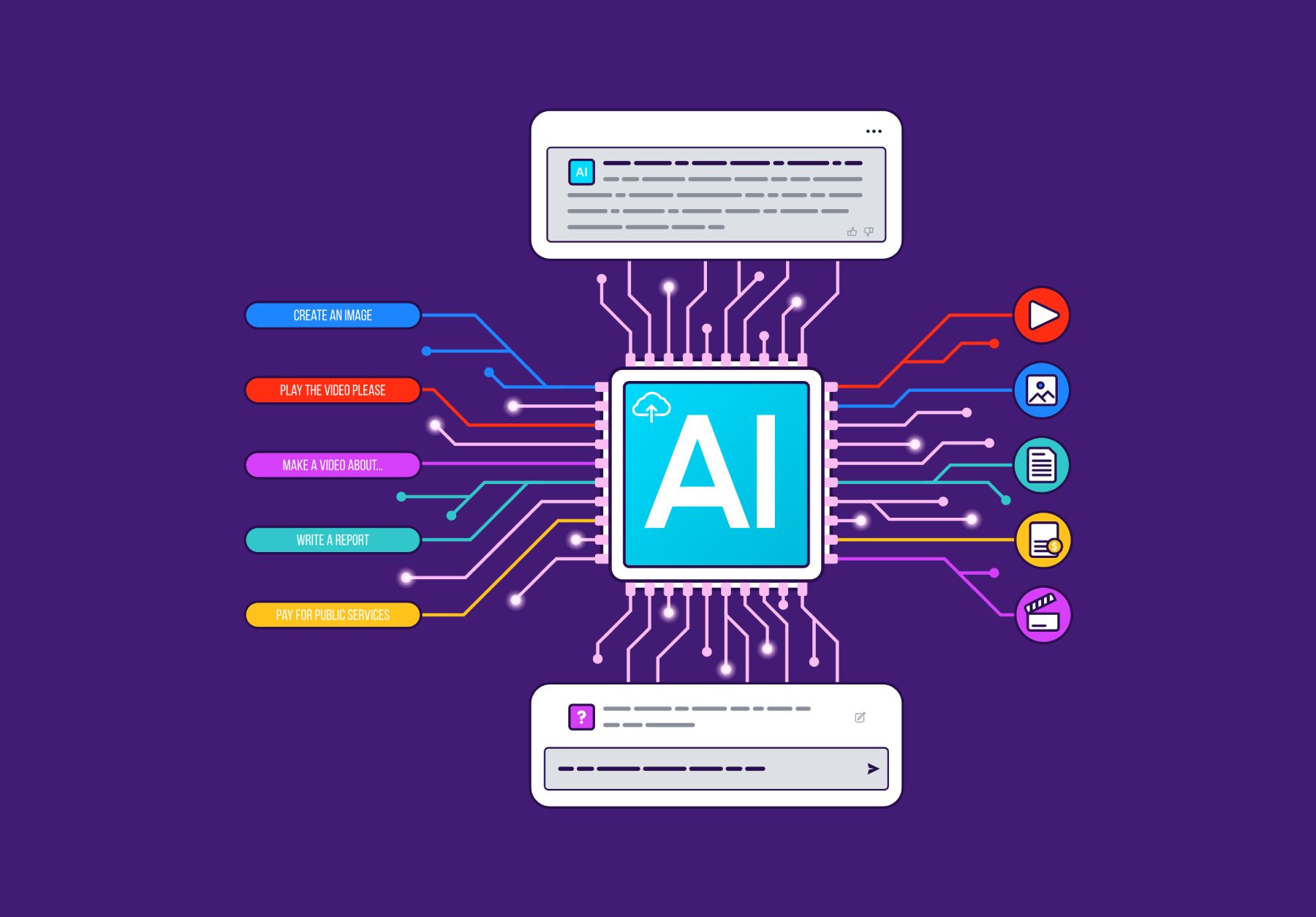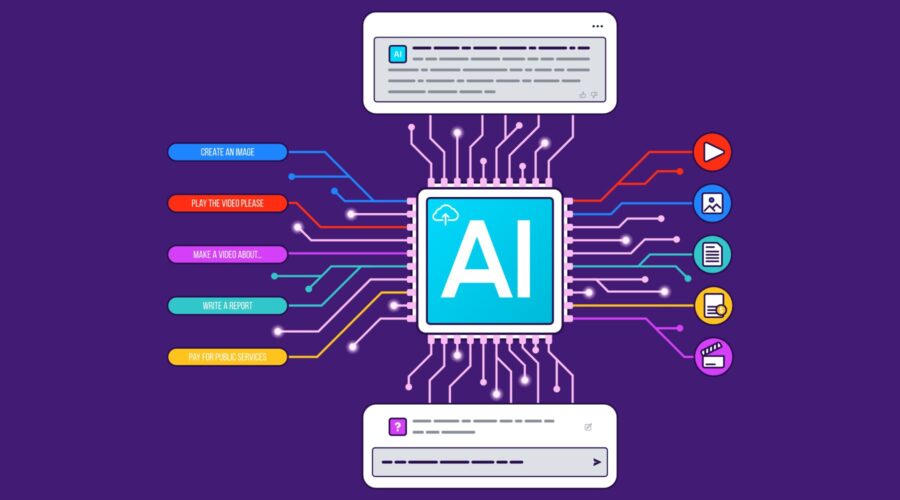The realm of artificial intelligence (AI) technology is expanding at an unprecedented rate. What was once considered the stuff of science fiction is now becoming an integral part of our everyday lives. From voice assistants and recommendation algorithms to cyber-security and advanced healthcare diagnostics, generative AI is reshaping the world as we know it.
One way to grasp this rapid progression is by the sheer volume of research being produced in the field.
“We are seeing 500,000 new AI research papers per year.”
Joelle Pineau, VP of AI Research at Meta
This all-in mindset for the technology shows the intense interest and investment in AI across academia, private industry, and government. But what about you? How can you use Gen AI for your business, hobbies, and personal life? We’ve collected all our best articles on different categories of generative AI products that will make it easy for you to see how AI can directly impact your day-to-day.
But first, what is Generative AI?
What is Generative AI?
Generative AI is a branch of artificial intelligence that focuses on creating unique content based on training data and neural networks. This can range from creating text content to images, music, and even video.
Subscribe To Our Youtube Channel
To understand generative AI, it’s helpful first to understand what AI is. Artificial Intelligence, or AI, is a broad term that refers to machines or software mimicking human intelligence. It’s about creating systems that can understand, learn, and apply knowledge, handle new situations, and carry out tasks that would typically require human intelligence. AI isn’t on par with human intelligence, but it is phenomenal at what it can do.
Generative AI takes AI a step further. It doesn’t just mimic human intelligence; it creates like a human might. This happens using machine learning models. These are like rules that get better over time through practice and training. The more data and training these models see the better they get at making high-quality, relevant content.
Development of Generative AI
Generative AI developed slowly, building on previous AI advancements. It began with machine learning. This kind of AI lets systems learn and improve from experience without specific programming.
As machine learning techniques evolved, we saw the development of neural networks, which are computing systems loosely inspired by the human brain. These networks can learn from vast amounts of data, making them incredibly powerful tools for tasks like image recognition, natural language processing, and content generation.

Image by Pro_Vector / shutterstock.com
Generative AI made significant strides with the advent of Generative Adversarial Networks, or GANs. A GAN is made up of two competing parts: a generator and a discriminator. These two parts work together to create very realistic “synthetic data.”
The generator’s job is to create new outputs. The discriminator’s job is to compare the output to trained data and attempt to fail it. When the discriminator doesn’t approve, the generator is tasked with trying again. Both parts keep this up until there is an approved output. This process helps the generator learn and refine itself. Over time, it improves at making data that looks much like the training data.
With all of this working under the hood, AI has been able to creep into several types of use cases for the average person. You don’t need to be an expert in programming GANs to leverage the technology fully.
Applications of Generative AI
Generative AI has flooded many digital tools, providing practical solutions for everyday tasks.
“In 12 months, call it next year this time (Mid-2024), I really think every company, every marketing team, every sales team, this generative and predictive AI is going to be a core part of every tool that they use. I just cannot see technology in the next year not incorporating this capability.”
Joyce Kim Chief Marketing Officer, Board Member at Twilio
If Joyce is correct, you’ll be using these tools in your professional life before you know it (if you haven’t already).
Let’s explore some of the key domains where generative AI is making a significant impact.
Language Processing and Writing
Generative AI is revolutionizing the field of language processing and writing. AI tools like ChatGPT (based on the GPT-3 model) and Copy.ai are becoming indispensable for creating content, streamlining tasks, drafting emails, writing articles, and answering questions. These tools dramatically enhance productivity and boost creativity.
Throughout our research on the state of AI writing and natural language processing (NLP), we’ve found some of the best tools that leverage these text-based AI models. These include:
- AI Writing Tools and Software
- AI Rewriting and Paraphrasing Tools
- AI Chatbots for Customer Service and more
- AI Content and Plagiarism Detectors
- AI Coding Assistants
- AI Website Builders
- AI SEO Tools
- AI Marketing Tools
As you can clearly see, Natural Language Processing (NPL) and language-based AI models are seeing some of the swiftest adoptions by businesses. Their use cases span many different types of tasks and tools. But language is far from the only thing that generative AI is capable of.
Visual Art and Enhancement
Generative AI is reshaping the landscape of visual creativity and enhancement. With foundation models like Stable Diffusion, products can generate unique images and art using text prompts. AI is now creating stunning artwork, creating realistic videos, and helping with photo editing. Tools like Midjourney and Photoshop are paving the way with this type of AI. We’ve written extensively about the best AI tools for creating visuals. These include:
Audio Generation and Speech Processing
Generative AI is transforming the auditory landscape as well. It can generate music in a specific style. Or you can use it as a text-to-speech tool to convert written text into spoken words. That opens up content to be more accessible for visually impaired users. On the other hand, speech-to-text tools can transcribe audio files, making them searchable and easier to analyze. Some of the best audio-centric AI tools include:
How to Use Generative AI Responsibly
Generative AI, with its ability to produce human-like content, offers a multitude of opportunities. However, the power of this technology also introduces a range of ethical considerations and potential for misuse. It’s crucial to navigate these challenges responsibly to harness the full potential of generative AI while minimizing harm. Whether you are using consumer-level AI tools, developing off the back of a broader AI model, or creating your own, we each have our roles in responsibly using AI.
Aside from the sky-is-falling forecasts about what AI could cause, tangible yet elusive risks are involved in using it.
Inherent Risks and Criticisms of Using Generative AI
As with any powerful technology, generative AI comes with its own set of challenges and potential pitfalls. One of the primary concerns is that generative AI models do not inherently fact-check the information they generate. They may produce content based on inaccurate or misleading data, leading to the propagation of false information. Worse still is that when they make an error, it isn’t obvious or always easy to figure out that they did.
This is particularly concerning in areas like journalism or academia, where the accuracy of information is paramount. Even in casual writing, AI “hallucinates” or invents facts (especially when it has a hard time finishing its output).
Another potential risk lies in the realm of content authenticity. As AI-generated content becomes more prevalent, AI detection tools are being developed to detect and flag such content. Publishers or individuals using AI-wholesale may experience great reputational damage, especially if the AI-generated content is not clearly labeled as such.
What Experts Are Saying About Gen AI Risks
There is no doubt that LLM training data includes copyrighted material, content that was added against website TOSs, and harmful and potentially defamatory information.

Image by designium / shutterstock.com
It’s still to be seen what legal ramifications exist for using AI. Whether you are developing a model or using one as a service in your own business.
“Serious legal issues exist around of using training data involving materials with copyright, TOS violation, reputational harm issues.”
Regina Sam Penti, Partner at Ropes and Gray
Bias (of each and every kind) is a part of generative AI training data. Collecting, cleaning, and keeping up with data are the biggest jobs for generative AI systems in the future.
“Bias will continuous problem because the data it was trained on human generated data…guardrails will need to be continue to be refined”
Eric Boyd, CVP of AI Platform at Microsoft
Even as a consumer, it’s important to know the risks that exist, even in the products we use. That doesn’t mean that you shouldn’t use these tools—it just means you should be careful about the information you feed these tools and what you ultimately expect from them.
Where Do We Go From Here?
As we stand on the brink of a new era in digital innovation, generative AI’s potential is only beginning to be realized. It’s not just about the technology itself. It’s also about how people and businesses can use it to change their everyday jobs and creative work.
Imagine using AI chatbots to handle customer service inquiries, providing immediate responses and support. Or using AI to transcribe audio, making content more accessible to a wider audience. Generative AI can even assist in writing, from drafting email responses and resumes to creating compelling marketing copy. And on and on.
For a deeper dive into the topic, check out our comprehensive post on the best available AI tools today. It provides a detailed overview of the top AI tools across various categories, helping you choose the right tool for your needs.
Generative AI is not just a technological advancement; it’s a tool for creativity, efficiency, and innovation. As we explore its potential, one thing is clear: generative AI is not just shaping our future; it’s here and now.
Generative AI FAQs
What kinds of output can a generative AI model produce?
- Text such as news articles, product descriptions, or creative writing
- Images from realistic portraits and landscapes to abstract art
- Audio outputs like music, speech, or sound effects
- Video including product videos, 3D animation, and realistic human avatars
- Code outputs for software applications, websites, or custom apps
What are the limitations of AI models?
- Bias: AI models can reflect biases in training data, leading to potentially unfair or inaccurate predictions.
- Complexity: The intricate nature of AI models can make them hard to understand, debug, or improve.
- Data requirements: AI models need large amounts of data for training, which can be costly to collect and prepare.
- Creativity: AI models lack human-like creativity and can only generate content based on their training data.
- Emotion: AI models don’t possess or comprehend emotions.
Despite these limitations, AI models are instrumental in solving many problems, and ongoing advancements may help overcome these challenges.
What is ChatGPT?
Launched on November 30, 2022, ChatGPT quickly gained recognition for its articulate responses across various knowledge domains. However, it has been noted for occasionally providing inaccurate information with confidence.
Key features of ChatGPT include:
- Natural Conversations: ChatGPT can engage in natural human-like conversations, employing various conversational techniques such as questioning, clarifying, and making statements.
- Comprehensive Answers: It can provide detailed and informative answers to a wide range of questions, even those that are open-ended or complex.
- Creative Text Generation: ChatGPT can generate diverse formats of text content, including poems, code, scripts, emails, and letters.
Could generative AI replace jobs?
However, the rise of generative AI also necessitates skilled professionals to develop and maintain these systems, creating new roles. Furthermore, as generative AI is used in innovative ways, it’s likely to open up new job opportunities.
While generative AI may transform specific jobs, it also presents new career paths, underscoring the importance of adaptability and continuous learning in the evolving job market.
This is all still speculative and could go any number of directions.
What is Auto-GPT?
- Autonomy: Auto-GPT is designed to carry out tasks independently, minimizing the need for human intervention.
- Versatility: It’s believed to handle many tasks, from debugging code and writing emails to craft presentations, blog posts, and marketing materials.
- User-Friendly: Auto-GPT is expected to be easy to use, making it accessible to individuals regardless of their technical expertise.
Given these potential capabilities, Auto-GPT could significantly transform our work processes, though its full impact remains to be seen.
What is Google’s Search Generative Experience?
SGE operates by generating a summary of search results when a user initiates a search. The summary, influenced by factors like the user’s location and search history, is displayed alongside the traditional list of links. Users can delve deeper by clicking on the summary or the original source links.
Benefits of SGE include a more comprehensive topic overview, improved user experience by facilitating information discovery, and reduced reliance on traditional search results. As such, SGE represents a potential enhancement to the user search experience.
Featured image by Doloves / shutterstock.com
The post What Is Generative AI and How Can You Use It in 2023 appeared first on Elegant Themes Blog.
